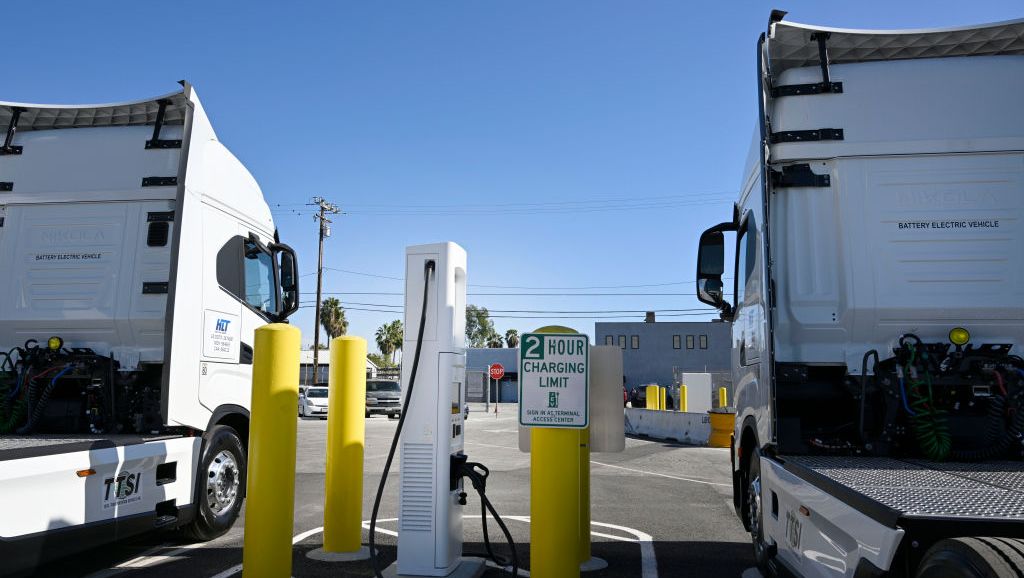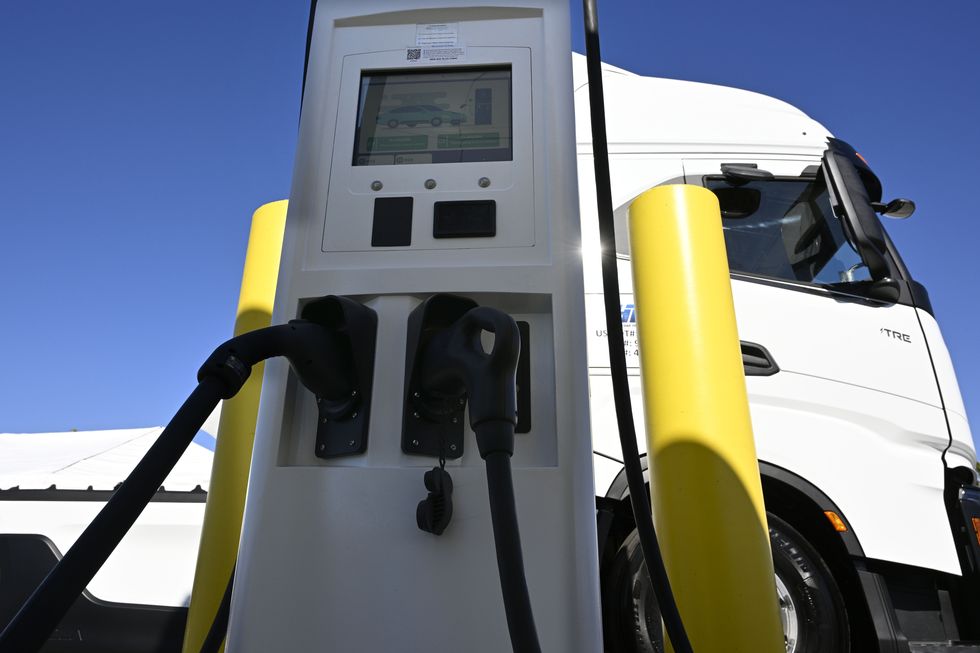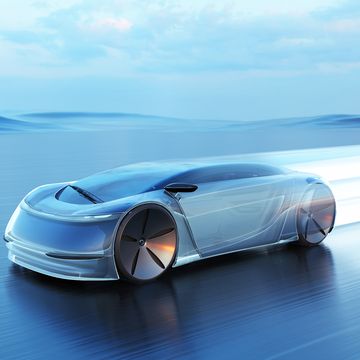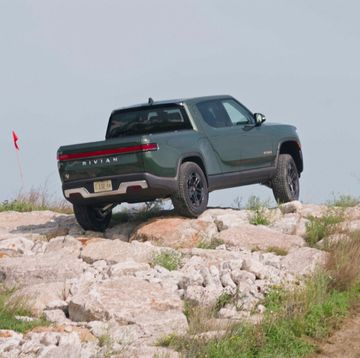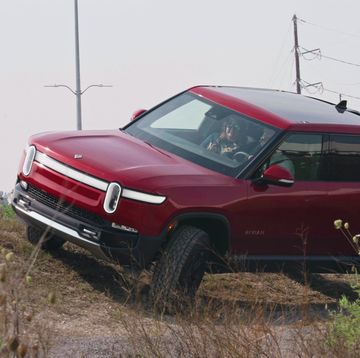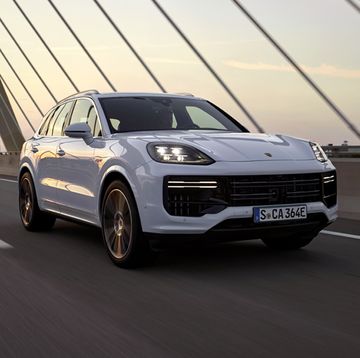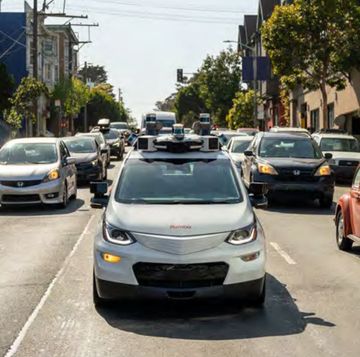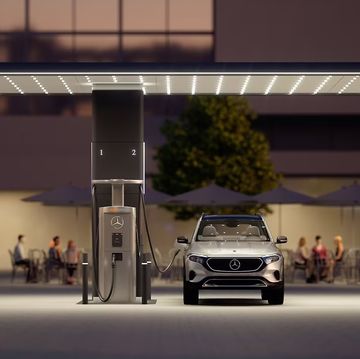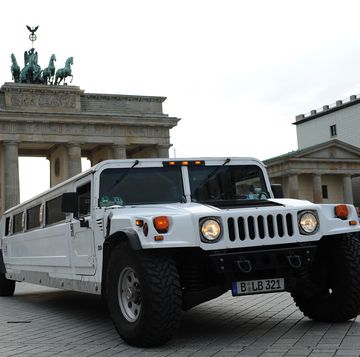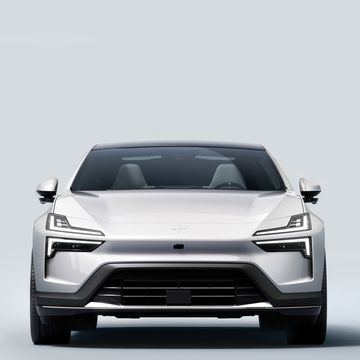- Daimler Truck North America, NextEra Energy Resources, and BlackRock Alternatives collaborate on medium- and heavy-duty truck charging network, dubbed Greenlane.
- The network will include existing and greenfield sites along the East and West coasts, focusing on major traffic corridors.
- The group is investing $650 million to start, with the first station slated for southern California.
If you want to drive an EV from coast to coast, at the moment you actually have a few options with station builders having completed a number of cross-country routes. But the same does not apply to the few electric cargo trucks that are currently in production, even if small-scale rollouts of medium- and heavy-duty trucks are getting under way. That's because most of the debuts in this category are aimed at purely local deliveries, with trucks relying on overnight charging at their home bases.
Daimler Truck North America, along with NextEra Energy Resources and BlackRock Alternatives, hope to change that, with a $650 million initial investment into a high-performance, nationwide charging network for battery-electric and hydrogen fuel-cell trucks. Dubbed Greenlane, the network will be designed just for medium- and heavy-duty haulers.
The teams in charge of designing the network, which will debut with a station in Southern California, are working on items such as commercial vehicle reservation platforms for drivers and fleet managers, as well as the hardware infrastructure itself.
"Greenlane is designed to begin to tackle one of the greatest hurdles to the trucking industry's decarbonization: infrastructure," said John O'Leary, president and chief executive officer, DTNA. "The nation's fleets can only transform with the critical catalyst of publicly accessible charging designed to meet the needs for medium- and heavy-duty vehicles."
Just a handful of manufacturers are currently developing battery-electric trucks aimed at cross-country routes, with the 40-ton Mercedes-Benz eActros LongHaul, due in 2024, slated to offer a range of 310 miles. But the infrastructure will need to be in place before any such vehicles become truly feasible.
In Europe, where the eActros LongHaul will debut, truck makers Volvo, Volkswagen, and Mercedes are working on an analogous charging network—a task that seems a bit more achievable in the next decade in western Europe rather than North America.
The Greenlane network plans for North America focus on critical freight routes along the West and East coasts, so we'll see these stations first along the I-5 and I-95 corridors. Greenlane also plans to focus on Texas early on, using a mix of existing and greenfield sites. And in the future, the network is envisioned to expand its availability to non-commercial vehicles as well.
"As a publicly available charging network developed to serve medium- and heavy-duty commercial fleets, Greenlane serves a critical infrastructure need for its customers utilizing newly developed charging and energy management software solutions, while being powered by renewable energy," said Rebecca Kujawa, president and chief executive officer of NextEra Energy Resources.
Still, we're likely to see fleet-based charging dominate the next few years when it come to EV trucks. For one thing, there aren't enough truly long-distance EV trucks on the market at the moment, and there won't be for some time. Secondly, fleet purchases will be aimed at much smaller segments even when it comes to semis, with fleet operators preferring to keep their own charging infrastructure.
Will we actually see meaningful debuts of long-distance electric trucks in this decade, or will most of the progress concern small delivery vans? Let us know what you think.

Jay Ramey grew up around very strange European cars, and instead of seeking out something reliable and comfortable for his own personal use he has been drawn to the more adventurous side of the dependability spectrum. Despite being followed around by French cars for the past decade, he has somehow been able to avoid Citroën ownership, judging them too commonplace, and is currently looking at cars from the former Czechoslovakia. Jay has been with Autoweek since 2013.
